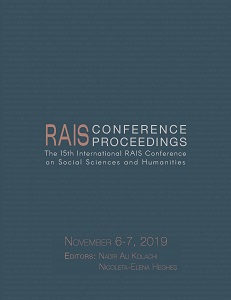Horizontal Inequality in Urban India: A Human Development Perspective
Horizontal Inequality in Urban India: A Human Development Perspective
Author(s): Paramjeet Chawla
Subject(s): Social development, Social differentiation
Published by: Scientia Moralitas Research Institute
Keywords: Horizontal Inequality; social groups; human development; capabilities approach; urban;
Summary/Abstract: In the current global scenario, India stands at the 130th position in the human development ranking for 2018, wherein the major challenge highlighted is that 26% of this human development remains lost due to inequality (UNDP 2018). Even though the notion of ‘vertical’ inequality remains a pertinent issue across the globe, the issue of inequality across social groups in India, arising from a historical discrimination and segregation, continues to remain a deep-seated worry for India’s overall development. The level of well-being of the individuals remains directly linked to the groups’ standard of living. The statements mentioned are also supported by evidence on social group inequalities, wherein the India Exclusion Report 2014-15 states that 59% of the Dalits are employed as labourers in Rural India, 46.5% of the Adivasis are falling in the same category, as against the overall rural population in which only 40% of the individuals are labourers. It is also important to note that, urban inequality remains the major driver for rising inequality in India, thereby requiring an in-depth understanding of inequality (India Inequality Report 2018). This paper focuses on understanding horizontal inequalities across the major social groups in India, Scheduled Castes (SCs), Scheduled Tribes (STs), Other Backward Classes (OBCs) and the unreserved/ general category in the urban spaces for India. The evidence for horizontal inequalities is scattered, and there remains a lack of quantification and consolidation of evidence for inequalities across social groups. This paper aims to measure horizontal inequalities with a human development perspective, for urban spaces in India utilizing the India Human Development Survey (IHDS) (Round 2), and therefore create actionable evidence for matters of gaps and linkages that remain in the capability’s achievement for all the social groups in India.
Book: Proceedings of the 15th International RAIS Conference on Social Sciences and Humanities
- Page Range: 183-194
- Page Count: 12
- Publication Year: 2019
- Language: English
- Content File-PDF

